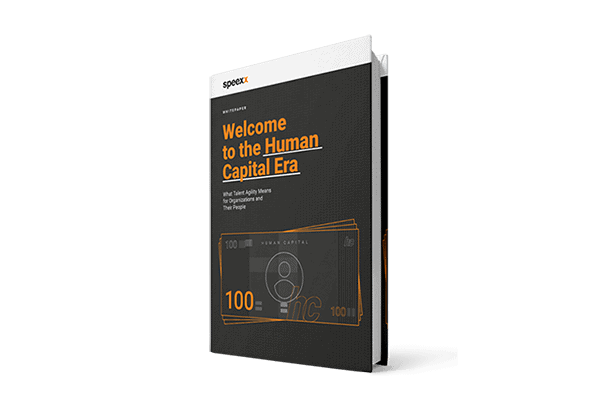I remember just a couple of years ago being involved in candidate interviews for roles that were clearly defined. I would ask questions designed to challenge prospective candidates and encourage them to showcase their value with examples.
But now the tables have well and truly turned – the global talent pool is now firmly in the driver’s seat. I’m now the one being challenged!
As a company, we are increasingly asked to demonstrate and describe our value proposition or “EVP” to candidates.
I will admit that I have been tempted to paraphrase JFK in these situations, “Ask not what your company can do for you, ask what you can do for your company,” but ultimately, this is a fundamental power shift that we need to recognize and embrace.
The demand for greater working flexibility is the big gamechanger, as McKinsey found that hybrid working arrangements top the list of preferences for 52% of employees for two or more days per week.
At Speexx, we’ve embraced this shift. We have many fully remote employees and have opted to give our employees a high degree of flexibility, with a recommendation of two office days per week. Our mindset is that we want our offices to be places that our employees want to come to – not have to.
In 2022, talent worldwide are waking up to their inherent value and demanding greater flexibility, terms, and agility. Those companies who are not willing to adapt will pay the consequences by losing out on the best and brightest as they depart for pastures new.
In thinking through this shift, these are the three key factors I would recommend you take a closer look at:
1. Change today for the benefit of tomorrow
“Future-Proofing” overlaps with talent agility as a necessary reaction to the period of unprecedented change we are in due to the COVID-19 pandemic, resultant accelerated digital transformation, and more hybrid and remote working possibilities. Being prepared for the future means having an agile talent pool. But attracting (and retaining) an agile talent pool requires companies to fully embrace an outlook at places employees’ considerations at the front and center of their agendas. This is an intentional investment, as Fosway Group states, “There needs to be a deep systemic organizational commitment, investment, and passion for the growth of people and their skills. And within that, a commitment to harness talent mobility as a lever for building skills and harnessing talent.”
2. Equilibrium of work and life
Employee wellbeing is a major uplift factor and has clear benefits to the companies that provide it: Analyst firm Gartner assessed work-life balance as a key metric for talent acquisition, engagement, retention and the all-important EVP. A more human-centric, holistic approach to how organizations’ employees “feel and do” also has clear corporate bottom-line value. 85% of companies that offer work-life balance programs for their employees report an increase in productivity.
3. Honing old skills and building new
When asked to name the number one HR priority for 2022 by Gartner, an overwhelming majority of HR leaders earmarked developing core skills and competencies. Training and support with future-proofing, a high level of agility, as well as investment into the individual, were also considered important. Harnessing the power of digital technology and transforming learning approaches can equip organizations and their people for competitive advantage and personal growth alike. Similarly, language and communication skills in a global workforce require an agile approach to learning. Here at Speexx, our language learning solution combines the best of blended learning and cutting-edge technology with a “bite–sized” approach that provides companies with a personalized offering for their employees to develop communication skills fit for the future.

Download our latest whitepaper, Welcome to the Human Capital Era: What Talent Agility Means for Organizations and Their People to learn more about how companies can step up to meet the expectations of tomorrow.
